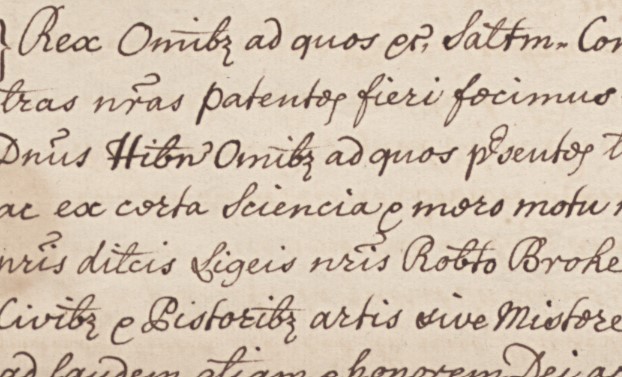History of the Bakers' Company
There is very little documentary evidence as to when the older guilds in London were first formed and the origin of the Bakers’ in particular must be lost in the mists of time.
It has been said that the Craft of baking is older than any other and that bread was baked on the primitive hearths of savages long before the dawn of civilisation, while it is recorded in biblical days that Pharaoh ‘hanged the chief baker’ (Genesis XL.22).
What is not in dispute however is that the Worshipful Company of Bakers can trace its City of London origins back over 800 years – and that, for over 500 of those years, the Company has owned and occupied its Harp Lane site in Tower Ward, just west of The Tower of London.
In this section of the Bakers’ Company website we trace the history of the Company as it moved through the many social, political and technical changes that the City of London and the trade of bread making have experienced in the last eight centuries.
There is very little documentary evidence as to when the older guilds in London were first formed and the origin of the Bakers’ in particular must be lost in the mists of time. It has been said that the Craft of baking is older than any other and that bread was baked on the primitive hearths of savages long before the dawn of civilisation, while it is recorded in biblical days that Pharaoh ‘hanged the chief baker’ (Genesis XL.22).
Then as early as 168 BC, bakers were the only craftsmen in Rome who were "freedmen" of the City, all other trades were being conducted as slaves. The whole craft was incorporated in a collect of bakers - COLLEGIUM PISTORUM - and was of so high repute in the affairs of the state for one of its representatives to have a seat in the Senate. It is clear therefore that a craft fraternity must have subsisted also in London during the Roman occupation.
However, after the Dark Ages it is known that the early guilds in London evolved from a purely religious basis when craftsmen in specific trades tended to congregate in a common area for both practical and mutual convenience. To some extent this still appertains today - for example in Hatton Garden. It is natural therefore that the members of a particular craft who worshipped together at their local church should form a community of interests and it was from these religious congregations that voluntary associations (as opposed to the compulsory ‘frith guilds’ of Saxon times) were formed for the mutual aid and protection of their members. These fraternal bodies of Guild took their title from their patron saint, and the guild of bakers was known at least until Mediaeval days as the ‘FRATERNITY or GUYLDE OF OUR LADY AND ST. CLEMENT’.
The spiritual connotation is perpetuated to this day in the title ’Worshipful’ and in the Company’s motto ‘PRAISE GOD FOR ALL’, which is also the traditional grace used before all meals. Likewise, a special Church Service always follows the annual election of the Master and Officers of the Company on the Monday following St.Clement’s Day, 23rd November.
The first known records of the existence of the Bakers’ Guild are contained in the great ‘Pipe Rolls’ of Henry II which listed the yearly ‘farm’ paid to the Crown and in these it is shown that the Bakers' of London (the BOLENGARII) paid a Mark of gold to the King’s Exchequer for their Guild from 1155 AD onwards. Only the Weaver’s guild have an entry a few years earlier in the Rolls, so the Bakers, based on these records, can claim to be the second oldest guild in London. Others, such as the Saddlers and Goldsmiths which like the Bakers may well have been forming much earlier, did not however pay the farm and were not recognised as guilds but were classed as adulterine and were fined accordingly.
The anchors on the waves are the symbol of St.Clement who was the third Pope, being made Bishop of Rome in 91 AD. He was later sentenced by the Romans to death by drowning with an anchor roped around his neck for preaching Christianity. It is worthy of note that the White bakers’ shield has always had two anchors vertically, whereas the old Brown-bakers’ shield had a single horizontal anchor, as embroidered on the Barge-fenders on the wall in the Court Room (these are a relic of the era when the new Lord Mayor’s annual procession went by river to Westminster and each Company had its own barge, until the river Pageant ceased in 1856).
The grant of a Crest and Supporters was obtained in 1590 and, as seen in today’s authentic Coat-of-Arms engraved on a window of the ante-room, has two Bucks in allusion to the use in the past of buckwheat, and the Company’s ancient motto - "PRAISE GOD FOR ALL"


